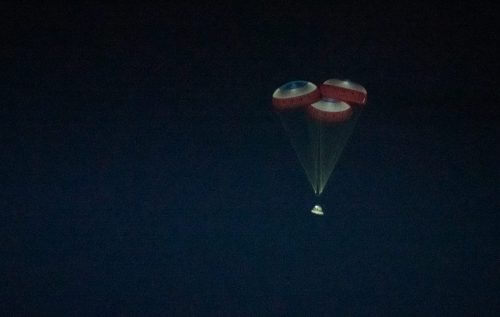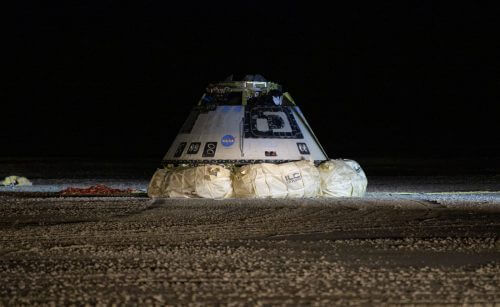The Starliner returned to Earth without meeting the International Space Station, but Boeing says that this landing shows the survivability of humans flying inside it. Starliner is the first American space capsule ever to land on land and not in the ocean

The first mission of Boeing's Stellar CST-100 spacecraft, which is supposed to fly passengers to the space station in the future, ended when it became the first American space capsule to land on American soil and not in the ocean (so far only the space shuttles have landed on land and all other spacecraft in the U.S. Sea).
The spacecraft landed at the US Army's White Sands site in New Mexico at 14:48 p.m. Israel time, after spending a little more than two days in orbit and undergoing tests in accordance with the goals of the flight, which was partially achieved as we know due to the malfunction that prevented it from reaching the International Space Station. The last time a spacecraft landed on orbit at White Sands Space Harbor was in 1982, when the space shuttle Columbia touched down on orbit, ending its STS-3 mission.
as mentioned, Shortly after launch on December 20 and the separation from the second stage of the booster that carried it, a malfunction occurred in the Starliner Due to a disruption in the mission timing systems that caused the spacecraft to use too much fuel on its way to its destination - docking at the International Space Station. Flight controllers managed to take control of the spacecraft and put it into a lower and more stable orbit. Starliner was nevertheless able to perform a demonstration of the capabilities of the key systems before it was returned to Earth, six days ahead of schedule.
"The rapid recovery of the spacecraft by the Starliner crew and the ability to achieve many mission objectives, including deorbiting, re-entry into the atmosphere and landing is thanks to the people at Boeing who have dedicated years of their lives to achieving commercial manned space flight," said John Mulholland, vice president and program manager of the program Boeing's commercial team. "Their professionalism and their cooperation with NASA personnel under challenging conditions allowed us to get the most out of this mission."
He said the Starliner landing demonstrated the robustness of its landing systems, including parachutes and innovative airbags.

Although Starliner was not manned on this flight, it still had one passenger - a robot named Rosie, who sat in the commander's seat the entire time. It was equipped with a dozen sensors that collected data that would help prove the Starliner was safe for future human crews.
Next, this crew module will be returned to Florida for data retrieval, analysis and refurbishment for future missions. This is the spacecraft chosen to fly NASA astronauts Sunita "Sonny" Williams and Josh Cassada, along with two international astronauts, on the first operational mission. At the same time, Boeing's Starliner team is finalizing the vehicle that will fly Boeing astronaut Chris Ferguson and NASA astronauts Mike Finke and Nicole Mann on the second manned test flight.
